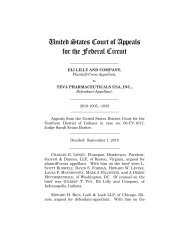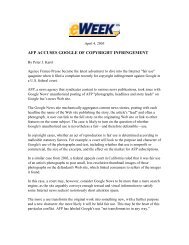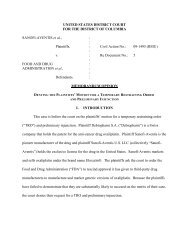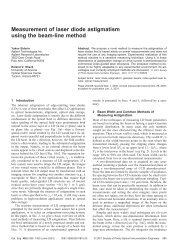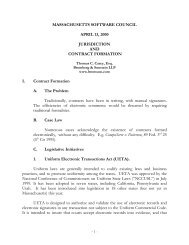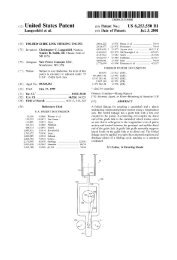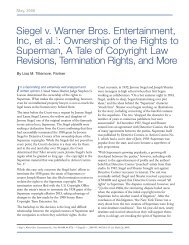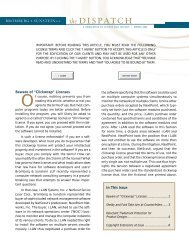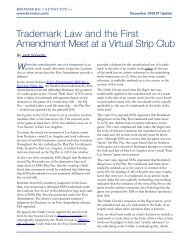Gucci America Inc. v. Frontline Processing Corp
Gucci America Inc. v. Frontline Processing Corp
Gucci America Inc. v. Frontline Processing Corp
Create successful ePaper yourself
Turn your PDF publications into a flip-book with our unique Google optimized e-Paper software.
Case 1:09-cv-06925-HB Document 42 Filed 06/23/2010 Page 14 of 24<br />
To satisfy due process, <strong>Gucci</strong> must also demonstrate that the assertion of jurisdiction<br />
“comports with traditional notions of fair play and substantial justice – that is, whether it is<br />
reasonable under the circumstances of the case.” Kernan, 175 F.3d at 243 (quoting Metro. Life,<br />
84 F.3d at 568). Five factors are considered to determine the reasonableness of jurisdiction: (1)<br />
the burden of jurisdiction on the defendant; (2) the interest of the forum in adjudicating the case;<br />
(3) the plaintiff’s interest in convenient and effective relief; (4) the judicial system’s interest in<br />
obtaining the most efficient resolution of the dispute; and (5) the shared interests of the states in<br />
furthering “social substantive policies.” See Kernan, 175 F.3d at 243; see also Parker<br />
Waichman, 2010 WL 1956871, at *7. Where the other elements for jurisdiction have been met,<br />
dismissals on reasonableness grounds should be “few and far between.” See Metro. Life, 84 F.3d<br />
at 575. The facts as alleged here indicate that jurisdiction would be reasonable in this case.<br />
B. Trademark Infringement Liability<br />
1. Standard of review<br />
To survive a motion to dismiss, a plaintiff must “plead enough facts to state a claim to<br />
relief that is plausible on its face.” Bell Atl. <strong>Corp</strong>. v. Twombly, 550 U.S. 544, 570 (2007). A<br />
facially plausible claim is one where “the plaintiff pleads factual content that allows the court to<br />
draw the reasonable inference that the defendant is liable for the misconduct alleged.” Ashcroft<br />
v. Iqbal, 129 S.Ct. 1937, 1949 (2009). Where the court finds well-pleaded factual allegations, it<br />
should assume their veracity and determine whether they “plausibly give rise to an entitlement to<br />
relief.” Id. at 1950. To decide the motion to dismiss, a court may consider “any written<br />
instrument attached to [the complaint] as an exhibit, materials incorporated in it by reference,<br />
and documents that, although not incorporated by reference, are ‘integral’ to the complaint.”<br />
Sira v. Morton, 380 F.3d 57, 67 (2d Cir. 2004) (internal citations omitted); see also NewMarkets<br />
Partners LLC v. Oppenheim, 638 F. Supp. 2d 394, 404 (S.D.N.Y. 2009). “[W]here the wellpleaded<br />
facts do not permit the court to infer more than the mere possibility of misconduct,”<br />
however, dismissal is appropriate. Starr v. Sony BMG Music Entm’t, 592 F.3d 314, 321 (2d Cir.<br />
2010) (quoting Iqbal, 129 S.Ct. at 1950.).<br />
Pursuant to Section 32 of the Lanham Act, “the owner of a mark registered with the<br />
Patent and Trademark Office can bring a civil action against a person alleged to have used the<br />
mark without the owner’s consent.” Tiffany, <strong>Inc</strong>. v. eBay <strong>Inc</strong>., 600 F.3d 93, 102 (2d Cir. 2010)<br />
14



